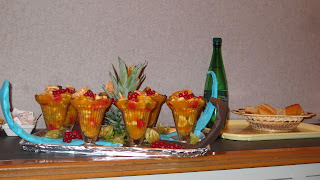france is now going to be home till 30th December, 2013.We plan to travel and celebrate Christmas here and then return to India. While we are in France we are trying all kinds of french cuisine. French cuisine is known all over the world. The typical meal includes three courses—a simple starter (soup or a salad, which is mostly cold), a main dish (lots of cheese, vegetables or chicken but we prefer vegetarian), and then cheese and fruit for dessert , followed by coffee to end the meal. Until the day the Bastille was stormed in 1789, the majority of French citizens were poor farmers whose diets were based mainly on grains. In the decades that followed, an upper class emerged – one that upheld good food as a mark of social standing. World War I heralded the beginning of modern French cuisine. Fresh apples, berries, haricot verts, leeks, mushrooms, and various squash and stone fruits are among the most commonly used produce. France has an abundance of artisan cheese and wine and French people consume the maximum of cheese in the world.
We prefer vegetarian and get lots of potatoes in different forms, baked, boiled, fried , mashed and dipped in abundant cheese.
In Paris also when ever I am invite to speak, it is followed by elaborate lunches and we have learnt a lot
about French cuisine. In 2010, UNESCO added French cuisine to the list
of cultural objects that are called
‘intangible cultural heritage’. The history of French cuisine dates back
to the middle ages. During this time French meals where very similar to
Moorish Cuisine, and were served in a style called service en
confusion, meaning that meals were served all at once. Meals consisted
of spiced meats such as pork, beef, poultry, and fish. Catherine De
Medicis (a Florentine princess) who married Henry duc d'Orleans (who
became King Henry II of France) influence French cusine to a great
extent. Italian chefs where light years of ahead of French culinary
experts, and had already begun creating dishes such as lasagna,
manicotti, and had experimented using ingredients like truffles, garlic,
and mushrooms. When Catherine married King Henry II, she brought along
with her Italian chefs who in turn introduced Italian culinary practices
to the French court. Even though the culinary cultures of these two
countries have taken different roads, the French owe much of their
culinary development to the Italians and their intervention in the
1500s. Between the 17 th and 18 th century there was a development in
Haute Cuisine or “High Cuisine”, and its origins can be found in the
recipes of a chef named La Varenne. In the late 19 th century and early
20 th century there began a modernization of haute cuisine. Much of this
new cuisine owes its development to Georges Auguste Escoffier







No comments:
Post a Comment